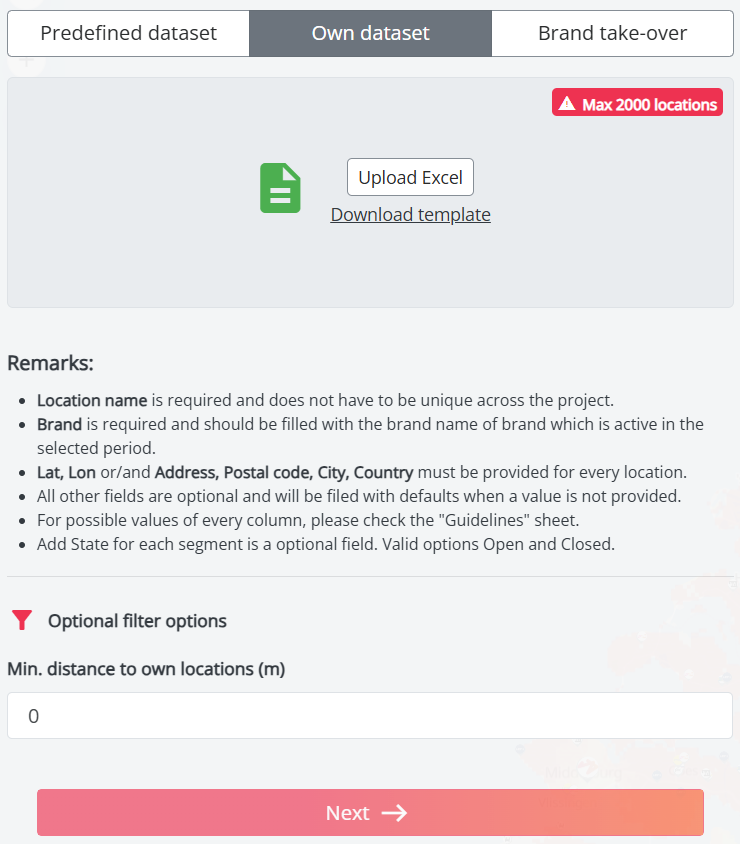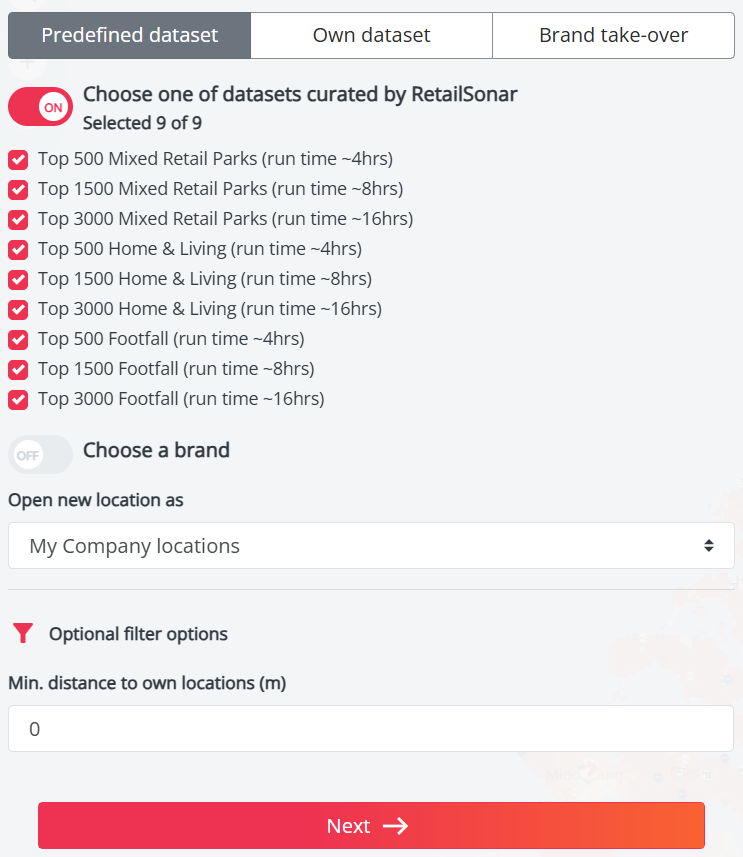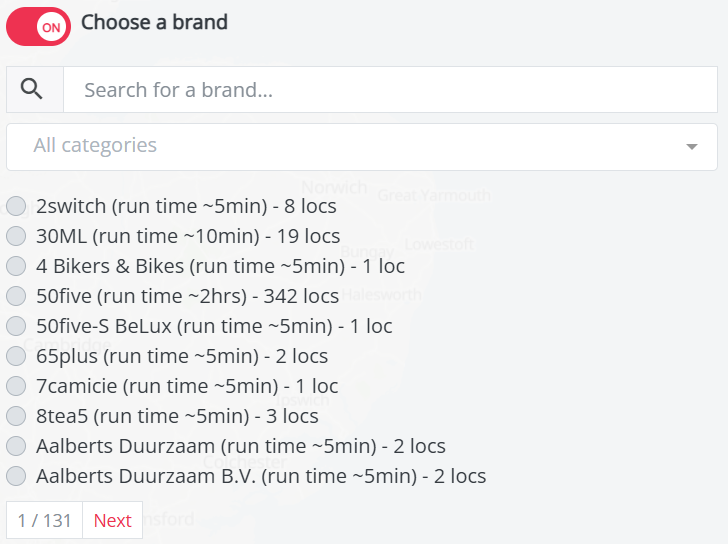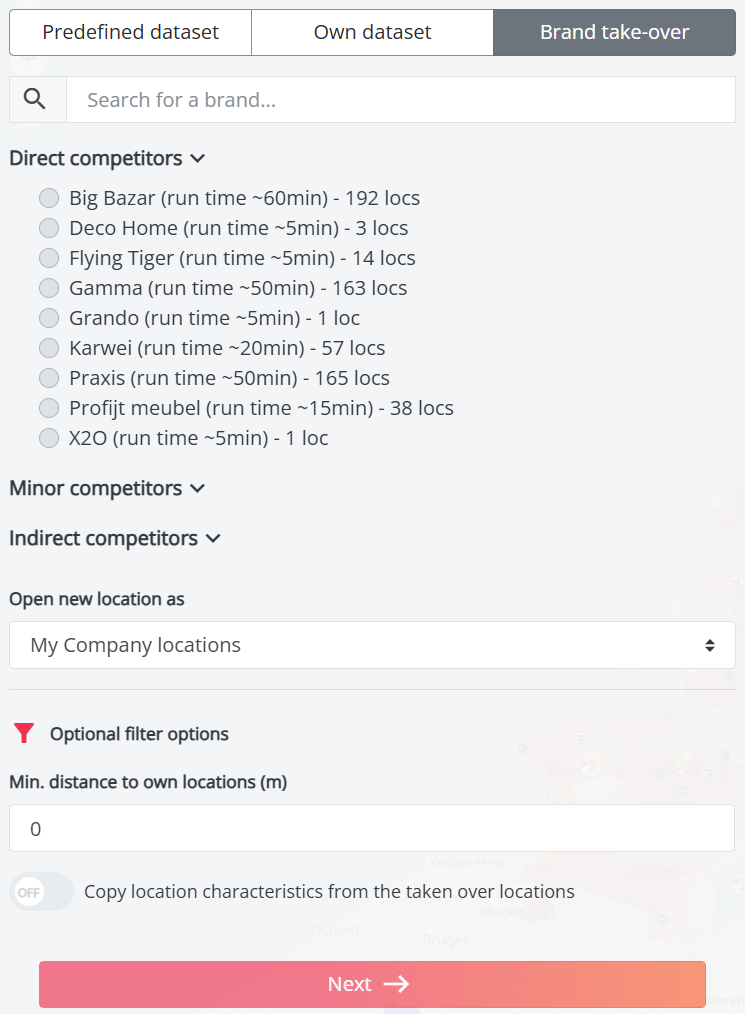Choose a Data set
At this stage of the project, you will select the data sources to be tested. Whether you are working with your own dataset, a predefined insipiration set of suggested locations, or evaluating competitor locations through a brand take-over, this step will allow you to choose the information needed for your analysis.
You can also refine it with optional parameters, such as excluding locations that are too close to your existing locations or using relocation logic during a simulation with closed locations with the predefined sets.
Start with your own data set
You can start with your own dataset by providing a list of locations for testing in batch in case of Hotspots projects or your own list of locations for Optimal characteristics projects. To do this, download the Excel template and follow the step-by-step instructions in this article to learn how to correctly fill your template.

Start with a predifined inspiration set (only for Hotspot projects)
You also have the option to use a predefined inspiration set, with two available options:
- A dataset curated by RetailSonar: select from various datasets relevant to your needs, if available for your country or platform (this option is not enabled by default). The definition for each inspiration set can be found through the link above.

- Choose an existing brand from our datastore: You can do this by selecting the option "Choose a brand" instead of "Choose datasets curated by RetailSonar". This option lets you select all store locations from a specific brand from the list and displays the estimated runtime. You can only select one brand at a time.

These pre-configured inspiration sets give you direct access to a list of relevant locations to test. You can choose to add parameters by following the last part of this article or you can directly go to the next step: Calculate the project.
Start with a brand take-over (only for Hotspot projects)
The third option allows you to evaluate competitor locations as part of a brand take-over strategy. You can search for a specific brand using the search bar or select a brand from the categories Direct Competitors, Minor Competitors, or Indirect Competitors by checking the relevant box. Each competitor datasets includes a list of locations for the selected brand. You can further refine the data by adding parameters as outlined in the final section of this article, or proceed directly to the next step: Calculate the project.

Add parameters (optional)
General filters
You can define a buffer zone around your own locations by selecting the option "Minimum distance to own locations (m)" This feature helps exclude potential locations within this zone, ensuring a more targeted analysis and preventing cannibalization.

For a brand take-over, you can also copy the characteristics of the selected locations. When enabled, a list of available characteristics will appear, allowing you to choose which ones to apply.

Simulation-based project filters
Two additional features are available when choosing to base your project on a simulation that includes closed locations (Step 2). These options provide better consideration of locations closures and allow for the exploration of relocation opportunities.

- Test only near closed baseline locations, as part of a relocation strategy.
This option enables the evaluation of new locations situated close to the closed locations in your simulation. It allows for the identification of strategic alternatives to the abandoned locations, ensuring optimal network coverage. - Allow to copy location characteristics of closed location to new locations being tested.
This option allows you to retrieve key characteristics of closed locations and apply them to nearby test locations. It ensures that the new locations being evaluated take into account the commercial and structural specifics of the old location, facilitating continuity in potential performance analysis and decision-making.
By combining these features or selecting the one that fits your specific case, you can test precise relocation while maintaining analytical consistency, leading to a more refined network optimization.
